New plans for former Beacon Journal building downtown include apartments, offices, retail
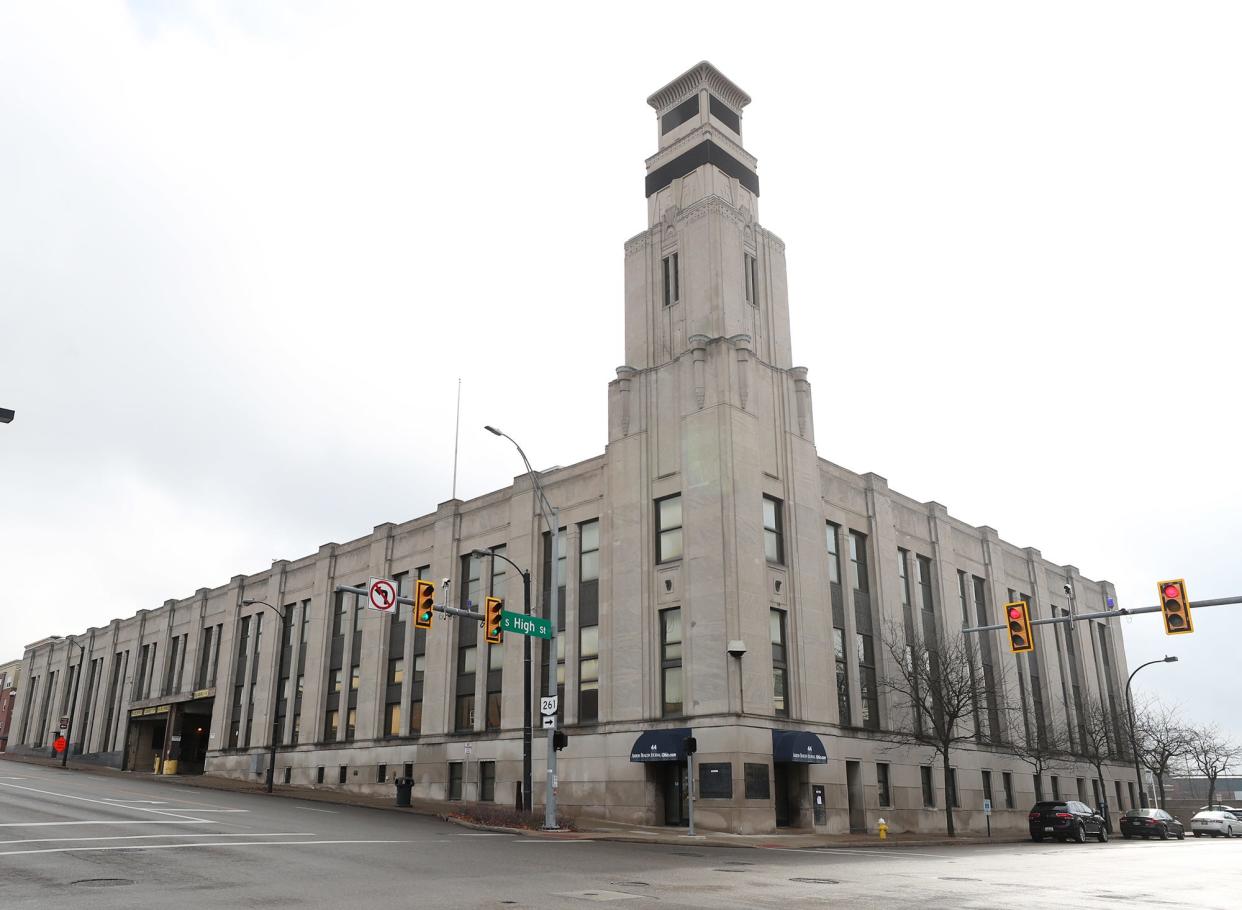
The former longtime home of the Akron Beacon Journal is slated to become a mixed-use building with nearly 200 apartment units, along with office, retail space and restaurants, according to state records.
The project, which was approved for $5.3 million in Ohio Historic Preservation Tax Credits this month, would transform an entire city block between downtown and the University of Akron that's been vacant since 2019, when the Akron Beacon Journal moved to a smaller and more modern space two blocks away in the AES building.
It's been a wild ride for the hulking facility over the past three years.
An Alabama property development company called Capstone bought the building for $1.2 million in 2020. Capstone initially envisioned it as the potential new home for the Akron Police Department or a specialized FedEx delivery base. But after none of that worked, Capstone proposed knocking the 230,000-square-foot building to the ground.
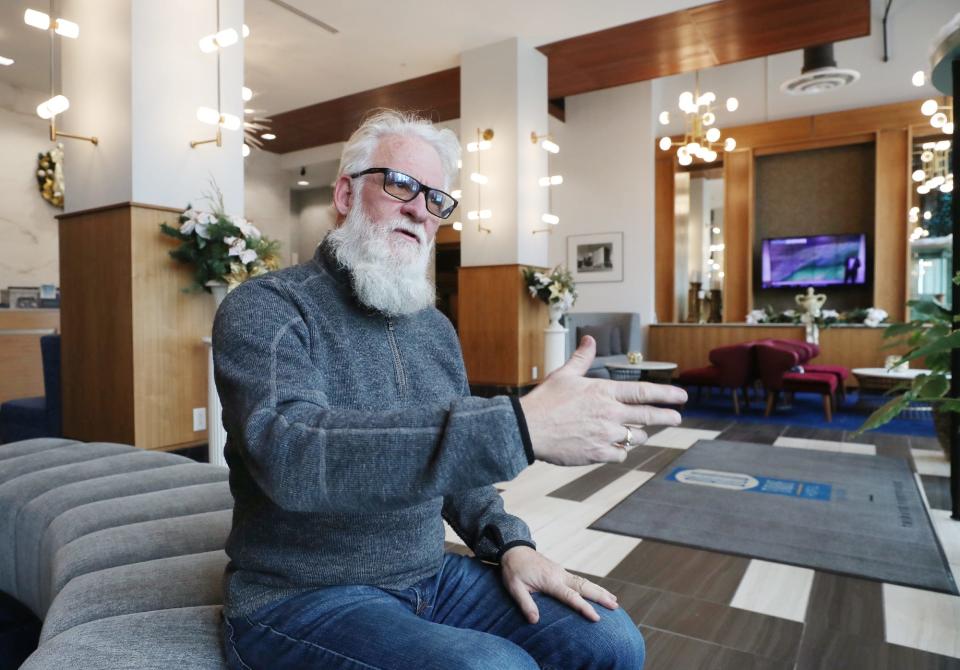
Akron City Council in the summer unanimously voted to reject the demolition. And somewhere amid the uncertainty, Akron developer Tony Troppe apparently got involved.
Troppe wasn't immediately available Thursday for comment. But public records show he represents a Cleveland-based limited liability corporation that applied for the state tax credits.
Michael Mouron, founder of Capstone Real Estate Investments in Birmingham, Alabama, said Thursday that Troppe "did all the work to secure" the tax credit, which will only be issued once the project is complete. Mouron did not specify what role Troppe will have in the ongoing development.
In the tax credit application, Troppe said financing for the $55 million project was already secured. Details of the financing were not provided, though the state application notes the project also has a commitment for a $6.4 million federal historic preservation tax credit.
Commercial tenants are also already lined up, according to the application, though their business names were redacted from the state file.

The application lists historical architect Lauren Burge as the contact person on the project, along with an address of Cleveland law firm Ulmer and Berne.
Cities nationwide seek to fill downtown vacancies post-pandemic
Transformation of the former Beacon headquarters comes at a pivotal moment for downtown Akron as it, along with cities across the country, works to remake itself after the pandemic sparked a remote work revolution that left many office buildings half empty.
In New York City, for example, there's an estimated 79 million square feet of vacant office space — the equivalent of more than 29 Empire State Buildings, PBS reported.
Akron's footprint is much smaller, as is its vacant office space. A recent Beacon Journal analysis showed that five vacant or nearly empty buildings downtown saturated the local market with more than 1 million square feet of mostly office space.
That analysis included the former Beacon building, but did not include two of the tallest buildings in downtown Akron: the 28-story, 325,792-square-foot Huntington Tower, which has been on the market since 2019, or the 23-story, 300,328-square-foot 1 Cascade Plaza, where intervention by public and private officials staved off a lengthy tax foreclosure case this year.
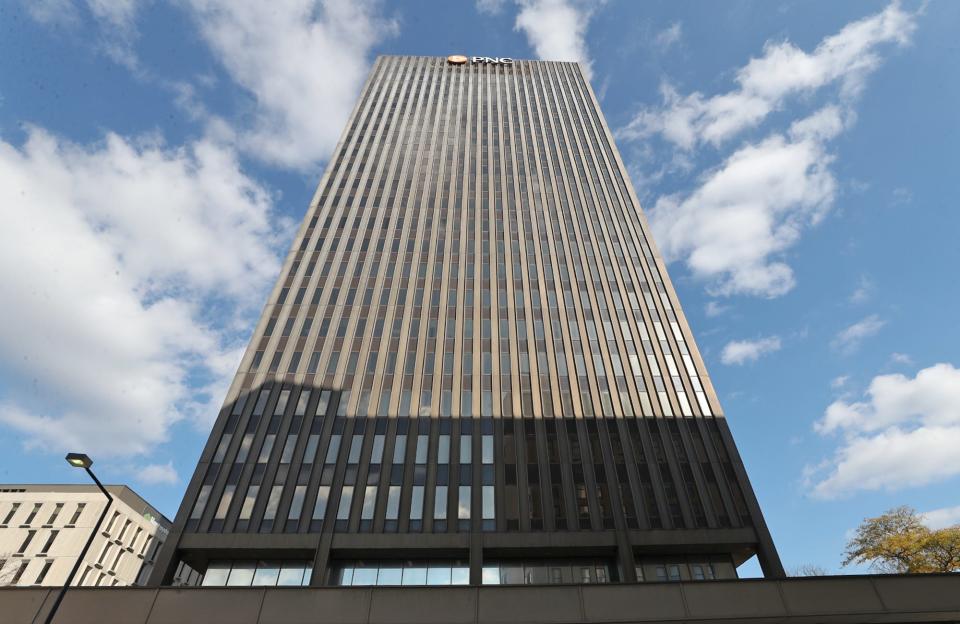
Much of that space may become housing, which has been a bright spot in Akron's ongoing downtown redevelopment, leaders have said.
Under Mayor Dan Horrigan's administration, Akron rolled out new and aggressive tax breaks for residential construction. Downtown developers, including Troppe, lined up, adding new studios and lofts in commercial buildings, including The Landmark, The Goodrich and 159 Main in the former Law Building.
But there's still a waiting list for units, a sign that there's demand for more apartments, downtown leaders have said.
Tony Troppe lands tax credits for 2 Akron projects
Troppe, best known for creating the arts district and the BLU-Tique Hotel in downtown Akron, also received Ohio Historic Preservation Tax Credits to help defray the cost of redeveloping that historic property.
Earlier this month, the state announced its latest round of historic tax credits totaling $67.5 million for 46 projects across the state, including three in Akron.
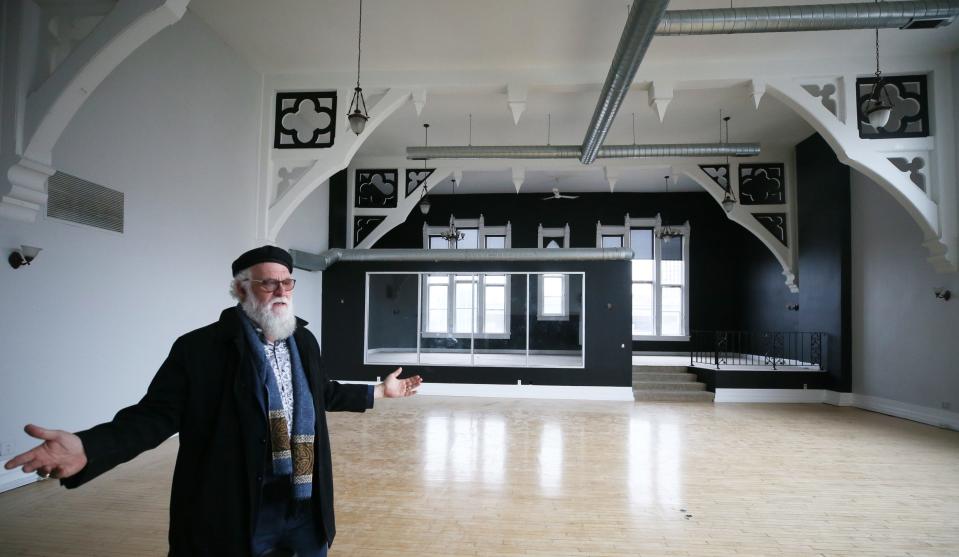
Troppe scored two: $5.3 million for the Beacon project and $250,000 to help with Akron's Castle Hall, a $6.7 million project to convert two buildings and a vacant lot at 57 E. Market St. into restaurants, apartments and a performing arts center.
Castle Hall will include elevators and 25 new apartments.
A third Akron project unrelated to Troppe also received a $250,000 tax credit. It's a $1.35 million project to overhaul the The Akron Soap Company on Furnace Street.
When construction may begin on the Beacon building is unclear.
The tax credit application said developers may remove 1985 additions to the rear of the facility, along with part of a 1954 section added to span an alley on the property.
Outside, metal plaques and ornamented spandrel panels will be "retained, repaired, and gently cleaned." The two levels of digital banding at the tower will remain.
Windows that were once covered over will reappear, and others will be replaced with clear, non-reflective vacuum glass.
Inside, the historic lobby will be preserved, along with other details throughout the building. Tenants will be able to store their things in the enormous space that once housed the Beacon's printing presses.
On the application, Troppe plainly stated why the historic tax credits were important: "The project is not viable without the credits," he wrote.
Community fought to save the old Beacon building
There was community outcry when developers wanted to tear down the building.
During a June City Council meeting, a member of the public opposed to the demolition called the Beacon building “a compass point in our lives.”
Signs on the building's tower, which was high enough to see all over downtown, for decades told Akronites the date and time.
The Beacon building was initially constructed in 1930 and housed another newspaper, the Akron Times-Press. The Beacon Journal, which acquired a majority of that paper, moved into the building in 1938.
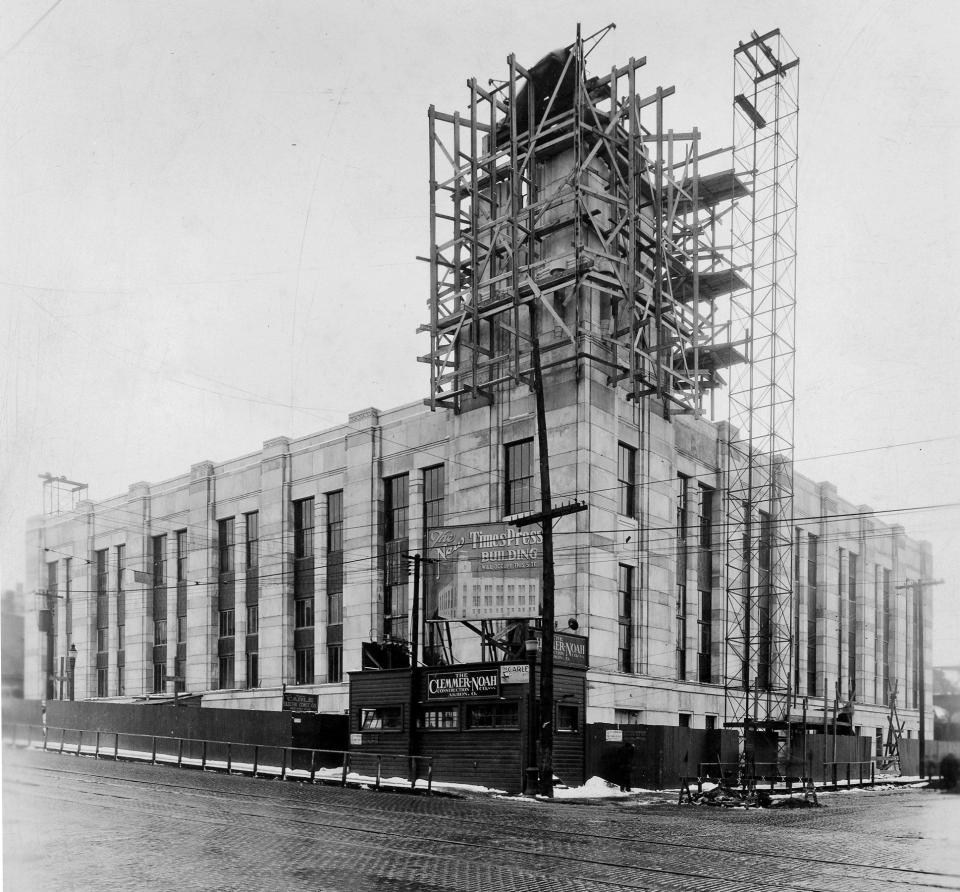
Akron City Council, in rejecting plans to demolish the building, wanted to avoid another surface parking lot downtown and also recognized that change in Akron doesn't always come quickly.
“It takes time in order for a legacy city with buildings like this, that are built for one specific use, to be readapted in modern times,” Councilman Jeff Fusco said, “and that happens, and we've seen it happen at the Bowery and other historic buildings in our city.”
This article originally appeared on Akron Beacon Journal: Former Akron Beacon Journal building gets state money for preservation

